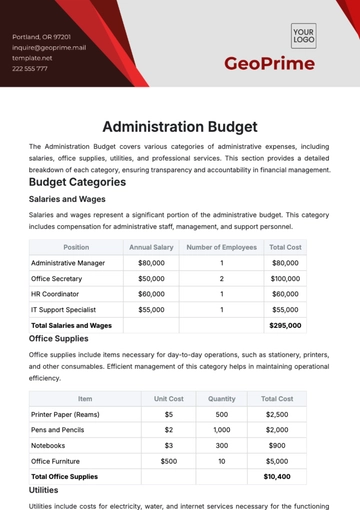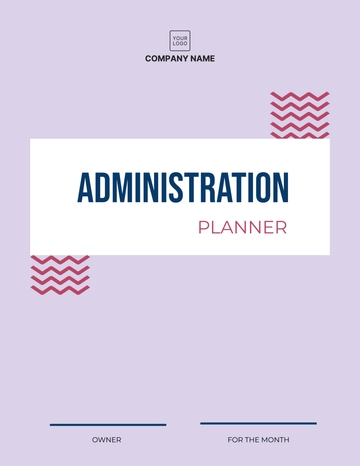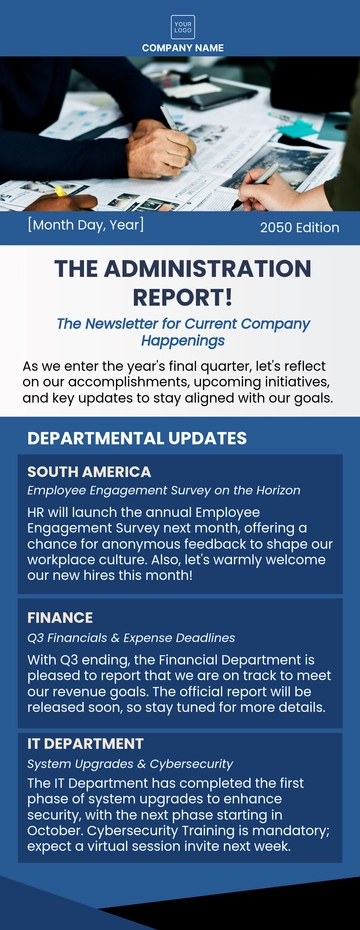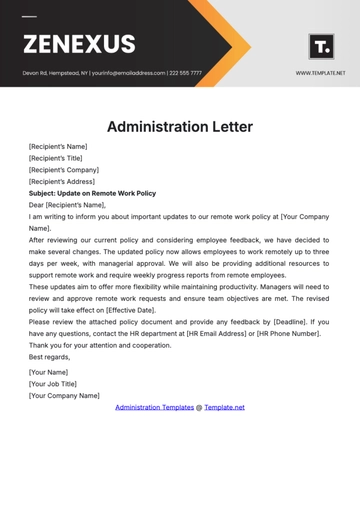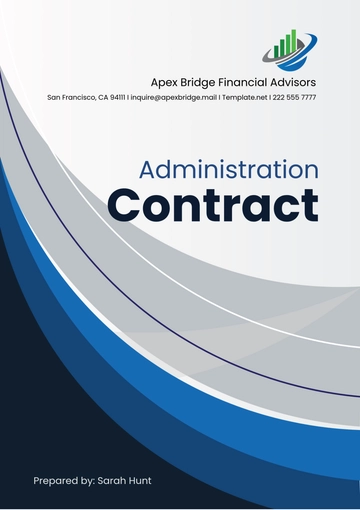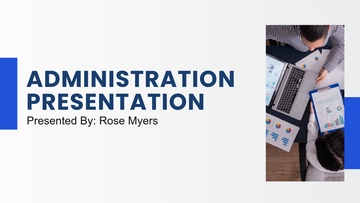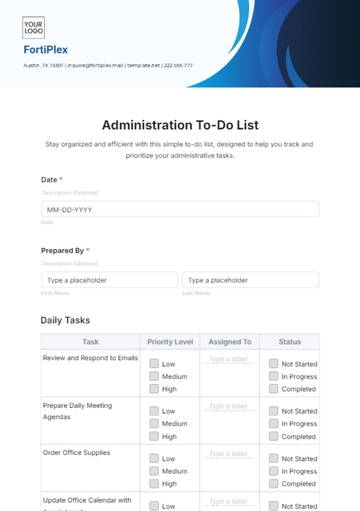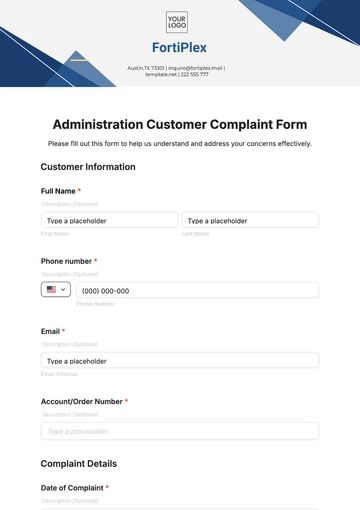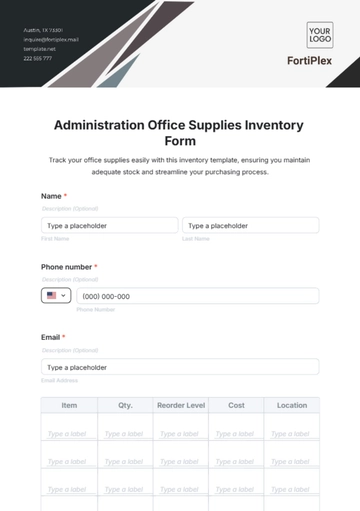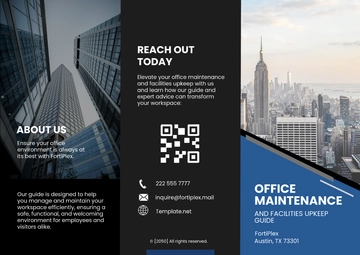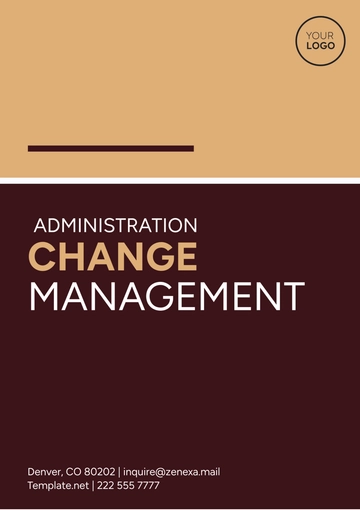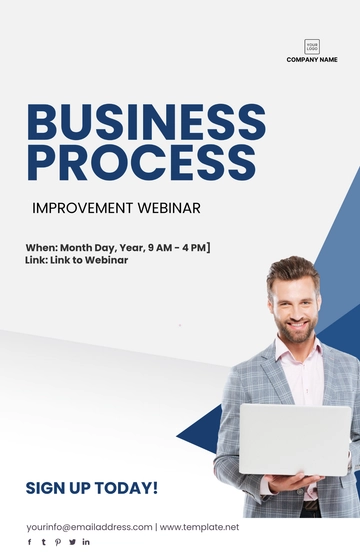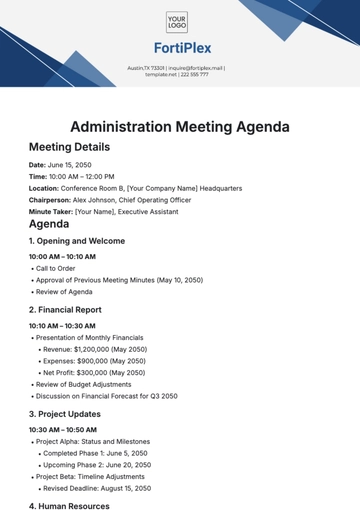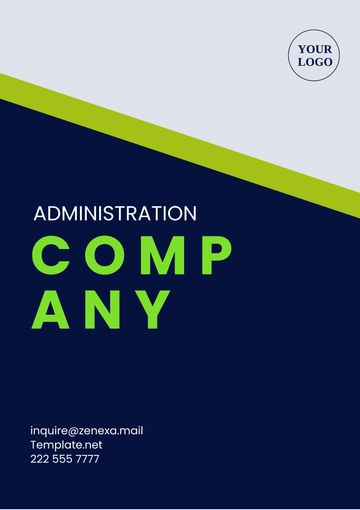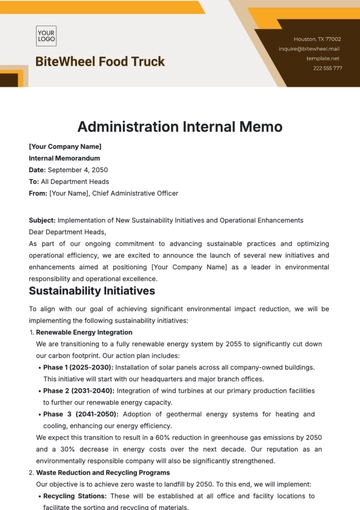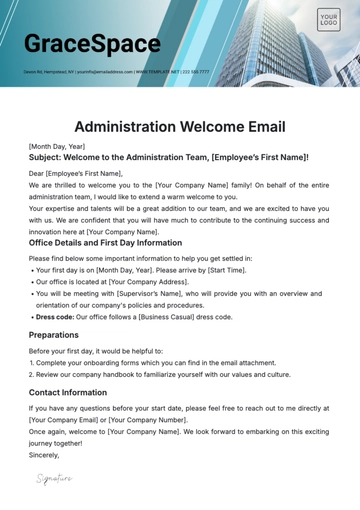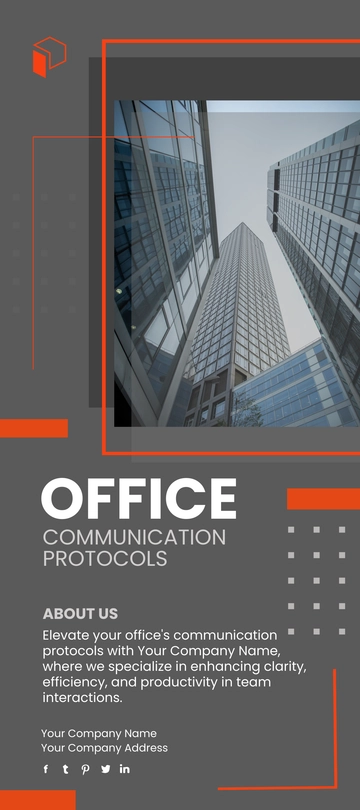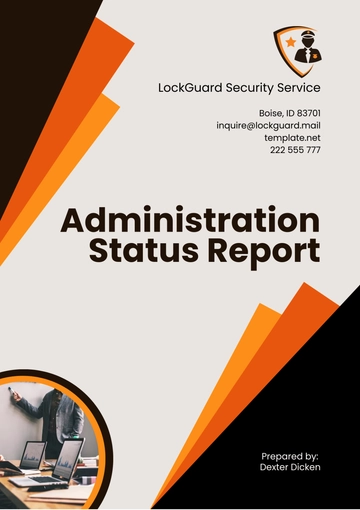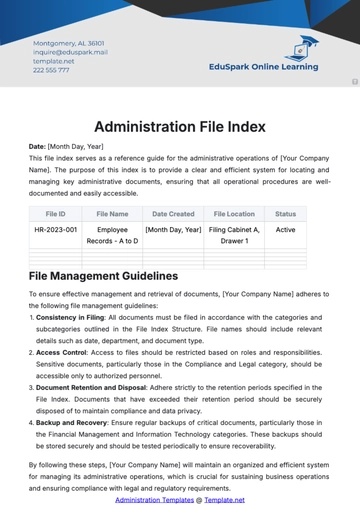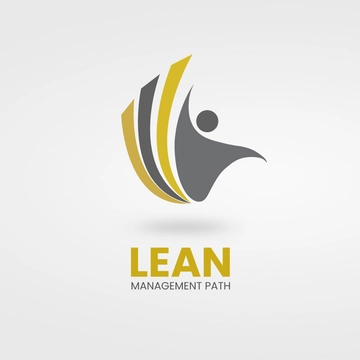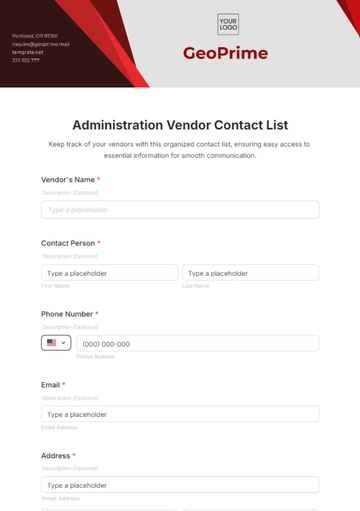Free Administration Corporate Ethics Guide
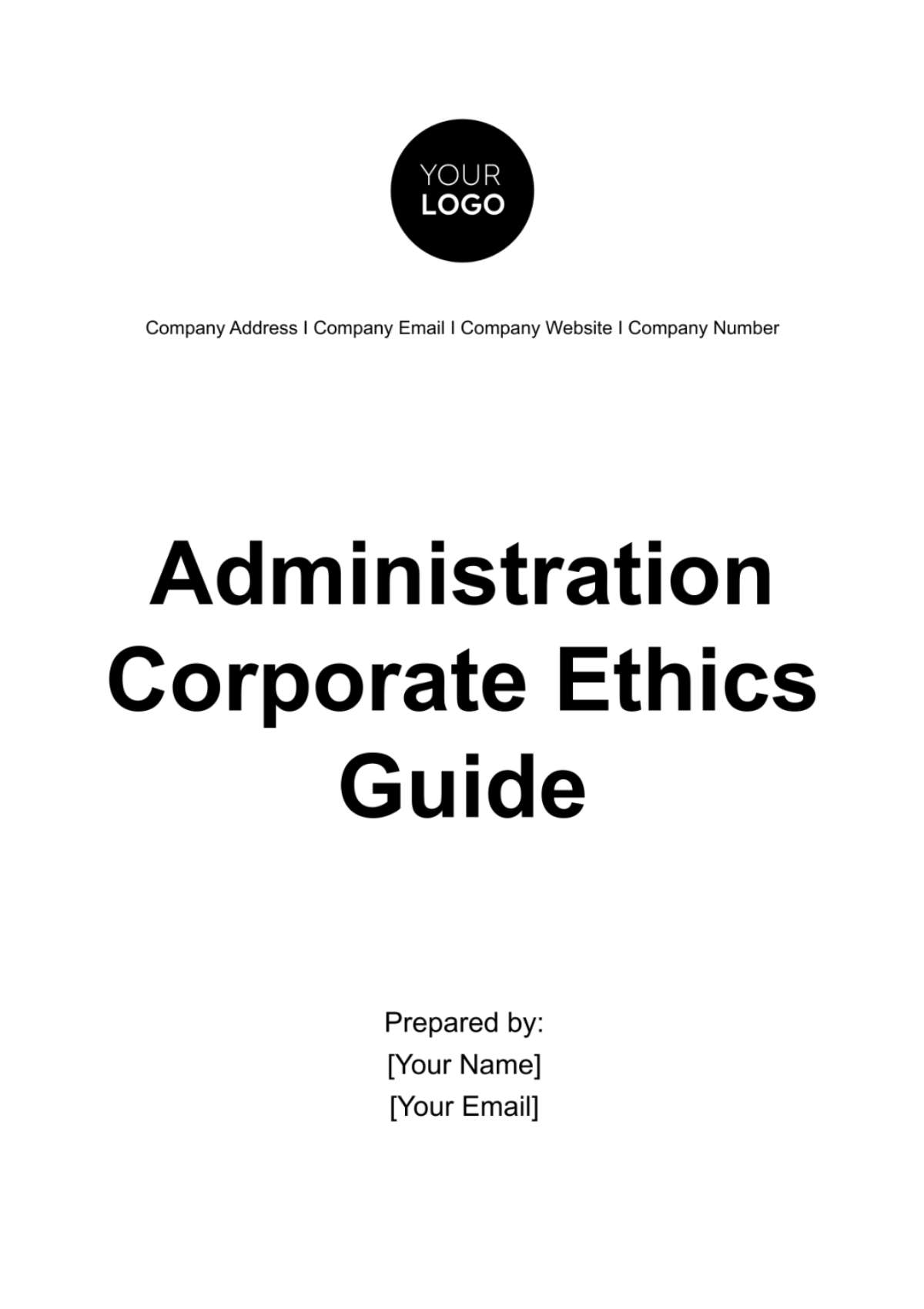
I. Introduction
A. Purpose of the Guide
The purpose of this Corporate Ethics Guide is to establish a framework for ethical conduct within [Your Company Name]. This Guide serves as a beacon, illuminating the path towards ethical decisions and actions. It is designed to help all employees, contractors, and stakeholders understand the company’s expectations regarding ethical conduct.
In addition to serving as a guide for current employees, this Guide also serves as an introduction to the company’s ethical culture for new hires. It provides them with a clear understanding of the ethical standards they are expected to uphold as members of the [Your Company Name] team.
B. Scope
This guide applies to all individuals associated with [Your Company Name], including but not limited to:
Full-Time Employees: All full-time employees, regardless of their position or location, are expected to adhere to the guidelines set forth in this Guide.
Part-Time Employees: Part-time employees are also required to follow the guidelines in this guide, even if their engagement with the company is temporary or intermittent.
Contractors: Contractors engaged by [Your Company Name] are expected to uphold the same ethical standards as employees.
Stakeholders: Stakeholders, such as suppliers, customers, and business partners, are also encouraged to understand and respect the ethical standards outlined in this guide.
II. Our Values
The company is committed to upholding the highest standards of ethical conduct and has identified five core values that guide its decisions and actions:
A. Integrity
Integrity is at the heart of everything the company does. It believes in doing the right thing, even when no one is watching. This means being honest and transparent in all dealings and maintaining the highest ethical standards. The company understands that integrity builds trust and strengthens relationships, both internally and externally.
B. Respect
Respect is fundamental to the company’s interactions. It values the unique skills, experiences, and perspectives that each individual brings and treats everyone with dignity and fairness. The company believes that respect fosters a positive work environment and leads to better business outcomes. It also understands that respect is reciprocal and encourages a culture where everyone feels valued and appreciated.
C. Accountability
The company holds itself accountable for its actions and decisions. It takes responsibility for its performance in all of its decisions and actions, both as a company and as individuals. The company understands that accountability is key to maintaining trust and credibility. It also believes that being accountable means learning from mistakes and continuously striving for improvement.
D. Excellence
The company strives for excellence in everything it does. It seeks to continually improve and innovate, and it sets high standards for performance. The company believes that this commitment to excellence will drive its success. It also understands that excellence is not just about the end result, but also about the process. It values hard work, perseverance, and a constant desire to learn and grow.
E. Teamwork
The company believes in the power of teamwork. It knows that great achievements are the result of collaboration and mutual support. The company values the collective genius of its team and believes that it can achieve more together than any individual could alone. It promotes a culture of collaboration where everyone feels part of a team and understands that their contributions are valued and important.
III. Ethical Standards
A. Compliance with Laws
[Your Company Name] is committed to conducting its business in full compliance with all applicable laws, rules, and regulations. The following table outlines the key legal areas that the company’s employees need to be aware of:
Area | Description |
|---|---|
1. Employment Laws | These laws govern the relationship between employers and employees, covering areas such as discrimination, harassment, and wage and hour laws. |
2. Health and Safety Laws | These laws are designed to ensure the safety and well-being of employees in the workplace. |
3. Privacy Laws | These laws protect the privacy of individuals’ personal information. |
4. Anti-Corruption Laws | These laws prohibit corrupt practices such as bribery and kickbacks. |
5. Competition Laws | These laws promote fair competition and prohibit anti-competitive practices. |
Compliance with laws is not just about avoiding penalties and sanctions. It is about earning the trust of our stakeholders, maintaining our reputation, and doing what is right. Each of the areas listed in the table above is important and requires our attention and understanding.
Now, let’s break down the importance of each area:
A. Employment Laws
Adherence to employment laws ensures that we treat all employees fairly and equitably. It helps us create a workplace where everyone feels valued and respected. This includes areas such as:
Discrimination: The company is committed to providing equal opportunities to all employees and does not discriminate on the basis of race, color, religion, sex, national origin, age, disability, or any other protected status.
Harassment: The company has a zero-tolerance policy for harassment of any kind. All employees have the right to work in an environment free from harassment, bullying, and intimidation.
Wage and Hour Laws: The company complies with all applicable wage and hour laws, including minimum wage, overtime, and meal and rest break laws.
B. Health and Safety Laws
Compliance with health and safety laws is crucial for maintaining a safe and healthy work environment. It shows our commitment to the well-being of our employees. This includes areas such as:
Workplace Safety: The company is committed to providing a safe and healthy work environment for all employees. This includes complying with all applicable occupational health and safety laws.
Emergency Preparedness: The company has plans in place to respond to emergencies in order to protect the health and safety of our employees.
C. Privacy Laws
Respecting privacy laws is essential in today’s digital age. It demonstrates our respect for the personal information of our employees, customers, and partners. This includes areas such as:
Data Protection: The company is committed to protecting the personal information of our employees, customers, and partners. We comply with all applicable data protection laws.
Confidentiality: The company respects the confidentiality of our employees’ personal information and does not disclose it to third parties without proper authorization.
D. Anti-Corruption Laws
Adherence to anti-corruption laws reinforces our commitment to conducting business ethically and transparently. It helps us build trust with our stakeholders. This includes areas such as:
Bribery: The company prohibits all forms of bribery. We do not offer, give, request, or accept any bribe, whether in cash or kind, to or from any person or company.
Gifts and Hospitality: The company has clear policies on giving and receiving gifts and hospitality. We do not give or receive gifts or hospitality if it could influence, or be perceived to influence, a business decision.
E. Competition Laws
Compliance with competition laws ensures that we compete fairly in the marketplace. It reflects our belief in the principles of free and fair competition. This includes areas such as:
Anti-Competitive Behavior: The company does not engage in anti-competitive behavior. We do not enter into agreements with competitors to fix prices, divide markets, or rig bids.
Fair Dealing: The company deals fairly with our customers, suppliers, competitors, and employees. We do not take unfair advantage of anyone through manipulation, concealment, abuse of privileged information, misrepresentation of material facts, or any other unfair dealing practice.
B. Conflicts of Interest
The company operates in a complex legal and regulatory environment. It is committed to conducting its business in full compliance with all applicable laws, rules, and regulations. The following table outlines some common situations that could give rise to conflicts of interest:
Situation | Description |
|---|---|
1. Personal Investments | Owning a significant amount of stock in a competitor, supplier, or customer could create a conflict of interest. |
2. Outside Employment | Working for a competitor or starting a business that competes with the company could pose a conflict of interest. |
3. Family and Personal Relationships | Having a close personal relationship with a competitor, supplier, or customer could create a conflict of interest. |
4. Gifts and Entertainment | Accepting excessive gifts or entertainment from a competitor, supplier, or customer could lead to a conflict of interest. |
Conflicts of interest can undermine the trust that our stakeholders place in us and can damage our reputation. They can also lead to legal and regulatory penalties. It’s therefore crucial that we all understand what conflicts of interest are and how to avoid them.
Each of these situations requires careful consideration:
A. Personal Investments
Personal investments can become a conflict of interest when they influence, or appear to influence, our decision-making at work. For example, owning a significant amount of stock in a supplier could potentially influence our decisions about which suppliers to use. It’s important to disclose any such investments to the company so that appropriate steps can be taken to manage the potential conflict.
B. Outside Employment
Outside employment can pose a conflict of interest, particularly if it’s with a competitor or if it affects our ability to do our job at the company. It’s crucial to disclose any outside employment to the company to ensure that it doesn’t conflict with our responsibilities at work.
C. Family and Personal Relationships
Family and personal relationships can create conflicts of interest if they influence, or appear to influence, our decision-making at work. For example, being in a position to make decisions that could benefit a family member or close friend could potentially create a conflict of interest. It’s important to disclose any such relationships to the company so that appropriate steps can be taken to manage the potential conflict.
D. Gifts and Entertainment
While gifts and entertainment can be part of normal business relationships, they can also create conflicts of interest if they’re excessive or if they influence, or appear to influence, our decision-making. It’s important to follow the company’s policies on gifts and entertainment and to disclose any gifts or entertainment that could potentially create a conflict of interest.
Moreover, it’s not just about avoiding actual conflicts of interest, but also about avoiding situations that could appear to others as conflicts of interest. Perception matters, and we need to be mindful of how our actions could be perceived by others. By being transparent and proactive in managing potential conflicts of interest, we can protect the integrity and reputation of the company.
IV. Workplace Environment
The company is committed to creating a positive and inclusive workplace environment where everyone feels valued and respected. Outlined below are some key aspects of our workplace environment:
A. Diversity and Inclusion
The company values diversity and is committed to creating an inclusive environment where everyone feels they belong. This includes:
Cultural Diversity: The company values the diverse cultural backgrounds of its employees and believes that this diversity enriches the workplace. It understands that each employee brings a unique perspective and set of experiences that can contribute to the company’s success.
Inclusion: The company is committed to creating an environment where everyone feels included and valued. It believes that everyone should have the opportunity to contribute to the company’s success. It strives to create a culture where different perspectives are valued and where everyone feels they have a voice.
Non-Discrimination: The company does not tolerate discrimination on the basis of race, color, religion, sex, national origin, age, disability, or any other protected status. It is committed to providing equal opportunities to all employees.
B. Harassment and Discrimination
The company has a zero-tolerance policy for harassment and discrimination. This includes:
Harassment: The company does not tolerate any form of harassment, including sexual harassment and bullying. It is committed to creating a workplace where everyone is treated with respect and dignity. It believes that all employees have the right to work in an environment free from harassment.
Discrimination: The company does not tolerate discrimination on any basis, including race, color, religion, sex, national origin, age, disability, or any other protected status. It is committed to providing equal opportunities to all employees.
C. Health and Safety
The company is committed to providing a safe and healthy work environment. This includes:
Workplace Safety: The company complies with all applicable health and safety laws and regulations. It is committed to taking all reasonable steps to prevent accidents and injuries in the workplace. It believes that a safe work environment is essential for the well-being of its employees and for the success of the company.
Employee Well-being: The company values the well-being of its employees and provides resources to support their physical and mental health. It understands that employee well-being is crucial for productivity and morale.
D. Work-Life Balance
The company recognizes the importance of work-life balance and supports its employees in maintaining a healthy balance between their work and personal lives. This includes:
Flexible Working Hours: Where possible, the company offers flexible working hours to accommodate the personal needs of its employees. It understands that a healthy work-life balance contributes to employee satisfaction and productivity.
Leave Policies: The company provides leave policies that support the diverse needs of its employees. It believes that providing supportive leave policies is an important part of promoting work-life balance. The leave policies include:
2.1. Vacation Leave: The company provides vacation leave to allow employees to rest and rejuvenate. The amount of vacation leave may vary depending on the length of service and the role of the employee.
2.2. Sick Leave: The company provides sick leave to ensure that employees can recover from illness without worrying about their income. It encourages employees to take the time they need to get well.
2.3. Parental Leave: The company supports employees who are expanding their families. It provides parental leave for the birth or adoption of a child.
2.4. Bereavement Leave: The company provides bereavement leave to support employees during their time of loss. It understands that employees may need time to grieve and to handle personal matters.
2.5. Personal Leave: The company provides personal leave for situations that require time off but do not fall under other leave categories. This could include personal matters, emergencies, or professional development activities.
By fostering a workplace environment that values diversity and inclusion, that does not tolerate harassment or discrimination, that prioritizes health and safety, and that supports work-life balance, we can create a workplace where everyone feels valued and respected, and where everyone can contribute to their full potential.
V. Reporting Violations
The company encourages everyone to speak up and report any violations of this guide. The company’s approach to reporting violations are the for the following:
A. Responsibility to Report
Everyone associated with the company has a responsibility to report any violations of this guide. This includes:
Identifying Violations: Everyone should be vigilant in identifying potential violations of this guide. This could include unethical behavior, illegal activities, or any other actions that violate the company’s ethical standards. It’s important to remember that identifying violations is not about pointing fingers or assigning blame, but about maintaining the integrity of our workplace and ensuring that we all adhere to the highest ethical standards.
Reporting Violations: If anyone identifies a potential violation of this guide, they should report it immediately. The company provides several channels for reporting violations, including a confidential hotline and an online reporting system. These channels are designed to make the reporting process as easy and accessible as possible, and to ensure that reports can be made anonymously if desired.
Cooperating with Investigations: If a violation is reported, everyone is expected to cooperate fully with any investigations. This includes providing accurate information and not withholding any relevant information. Cooperation is crucial for ensuring that the investigation is thorough and fair, and that the truth is uncovered.
B. No Retaliation
The company has a strict no-retaliation policy. This includes:
Protection for Whistleblowers: The company will protect anyone who reports a violation of this guide in good faith. This means that they will not be subject to any form of retaliation, such as harassment, discrimination, or adverse employment actions. The company recognizes the courage it takes to speak up and report a violation, and it is committed to protecting those who do so.
Disciplinary Actions for Retaliation: If anyone engages in retaliation against someone who has reported a violation, they will be subject to disciplinary action. The disciplinary measures typically include:
2.1. Verbal Warning: For minor instances of retaliation, the company may issue a verbal warning. The warning will be documented and the individual will be advised to correct their behavior.
2.2. Written Warning: For more serious instances or repeated minor instances of retaliation, the company may issue a written warning. The warning will detail the nature of the retaliation and the expected corrective action.
2.3. Suspension: For serious instances of retaliation, the company may suspend the individual without pay. The length of the suspension will depend on the nature of the retaliation.
2.4. Termination: For very serious instances or repeated instances of retaliation, the company may terminate the individual’s employment. Termination is the most severe disciplinary measure and is used as a last resort.
Reporting Retaliation: If anyone believes that they have been subject to retaliation for reporting a violation, they should report it immediately. The process for reporting retaliation typically involves:
3.1. Making a Report: The individual should report the retaliation to their supervisor, the Human Resources department, or through the company’s confidential hotline or online reporting system.
3.2. Investigation: Once a report of retaliation is received, the company will initiate an investigation. The investigation will be conducted in a fair and impartial manner.
3.3. Protection: The company will take steps to protect the individual who reported the retaliation from further retaliation during the investigation.
3.4. Resolution: At the conclusion of the investigation, the company will take appropriate action based on the findings of the investigation. This could include disciplinary action against the person who engaged in retaliation.
VI. Enforcement
The company is committed to enforcing this guide to ensure that its ethical standards are upheld. Presented below are the company’s approach to enforcement:
A. Disciplinary Actions
The company takes violations of this guide seriously and will take appropriate disciplinary action against those who violate it. This includes:
Investigation: The company will thoroughly investigate any reported violations of this guide. The investigation process typically involves the following steps:
1.1. Receipt of Report: Upon receiving a report of a potential violation, the company will acknowledge receipt of the report and initiate the investigation process.
1.2. Preliminary Review: The company will conduct a preliminary review to determine whether the reported conduct, if true, would constitute a violation of the guide.
1.3. In-depth Investigation: If the preliminary review indicates a potential violation, the company will conduct an in-depth investigation. This may involve interviewing the person who made the report, the person accused of the violation, and any witnesses. It may also involve reviewing relevant documents and other evidence.
1.4. Findings and Recommendations: At the conclusion of the investigation, the company will prepare a report detailing the findings of the investigation and recommending any necessary disciplinary actions.
Disciplinary Measures: Depending on the severity of the violation, disciplinary measures may range from a verbal warning to termination of employment. The company is committed to ensuring that the disciplinary measures it takes are proportionate to the violation. The disciplinary measures typically include:
2.1. Verbal Warning: For minor violations, the company may issue a verbal warning. The warning will be documented and the employee will be advised to correct their behavior.
2.2. Written Warning: For more serious violations or repeated minor violations, the company may issue a written warning. The warning will detail the nature of the violation and the expected corrective action.
2.3. Suspension: For serious violations, the company may suspend the employee without pay. The length of the suspension will depend on the nature of the violation.
2.4. Termination: For very serious violations or repeated violations, the company may terminate the employee’s employment. Termination is the most severe disciplinary measure and is used as a last resort.
Reporting: The company will keep a record of all reported violations and the disciplinary actions taken in response. This will help the company to monitor compliance with this guide and to identify any patterns or trends that need to be addressed. Regular reports are generated and reviewed by the management to ensure that the enforcement of the guide is effective.
B. Training and Education
The company believes that training and education are key to ensuring compliance with this guide. This includes:
Induction Training: All new employees will receive training on this guide as part of their induction. This will help to ensure that they understand the company’s ethical standards from the outset. The induction training is comprehensive and interactive, designed to engage the new employees and make them aware of their ethical responsibilities.
Ongoing Training: The company will provide ongoing training to all employees to keep them updated on any changes to this guide and to reinforce the importance of ethical conduct. The training programs are regularly updated and are designed to be engaging and informative.
Specialized Training: The company will provide specialized training to employees who are in positions that present particular ethical risks. This will help to ensure that they are fully equipped to deal with these risks. The specialized training programs are tailored to the specific needs of the roles and are delivered by experts in the field.
C. Monitoring and Review
The company will regularly monitor compliance with this guide and will review the guide periodically to ensure that it remains relevant and effective. This includes:
Compliance Audits: The company will conduct regular compliance audits to check that its operations and practices are in line with this guide. The audits are conducted by an independent team and the findings are reported to the management.
Review of the guide: The company will review this guide at least once a year to ensure that it remains up-to-date and relevant. The review will take into account any changes in the legal and regulatory environment, as well as any feedback from employees and other stakeholders. The review process is thorough and involves input from various stakeholders, including employees, management, and external experts.
Feedback Mechanisms: The company will establish mechanisms for employees and other stakeholders to provide feedback on this guide. This will help the company to identify any areas that need improvement. The feedback mechanisms are easy to use and accessible to all employees, and the company encourages everyone to provide their feedback.
- 100% Customizable, free editor
- Access 1 Million+ Templates, photo’s & graphics
- Download or share as a template
- Click and replace photos, graphics, text, backgrounds
- Resize, crop, AI write & more
- Access advanced editor
Guarantee that your corporate ethics guide is effective and aligned with your needs with this adaptable Administration Corporate Ethics Guide Template! This editable and customizable template from Template.net provides a comprehensive framework for planning corporate ethics. With our AI Editor Tool, you can easily modify it to suit your needs!


